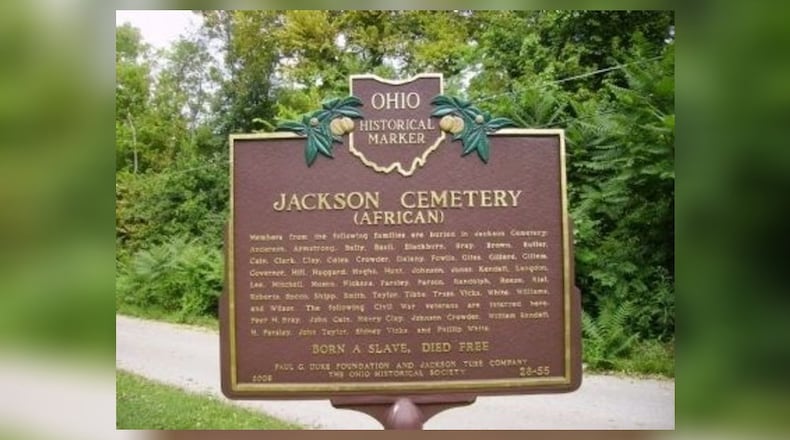The plan will look at possible improvements including an entrance feature, pull-off parking spots, lighting ideas, way-finding and boundary designation. The goals include using natural landscaping and providing ease of maintenance for the township. How the plan or parts of the plan would be implemented remains to be determined, commissioners said.
The hiring of the engineering firm followed a recent commissioners meeting with the Springcreek Twp. trustees, who handle the maintenance/mowing contract and pay for electricity for lights.
They will be involved in review of the design/concept to ensure they are comfortable with any project before work is done, said county Administrator Charlotte Coffey.
Commissioner Greg Simmons said the slaves freed by the Virginia owner John Randolph came to Ohio first to the Mercer County area, where they were not welcomed before settling in the area near Piqua.
“They built their own little cemetery. It got spruced up a little bit but it needs to be spruced up more. It is a place in Miami County that has gone by the wayside,” Simmons said.
" I am really happy to be a part of this,” Simmons said of the cemetery project.
Coffey said commission President Ted Mercer first approached her about a look at a possible cemetery project.
“The cemetery is a major piece of Miami County history and is very underutilized/unknown,” Coffey said. “I think that the commissioners really want to highlight the history and assist the township in creating a space that is well marked, inviting, respectful and low maintenance.”
Mercer said he wasn’t aware of the cemetery until a couple of years ago. A recent tour showed commissioners “how it really needed spruced up.” The project is a good use for some of the county’s ARPA money, he said.
“It is truly a big piece of the history of Miami County,” Mercer said.
Colley said the ARPA committee of county staff has looked at funding for possible work at the cemetery once the plan is received. The committee makes recommendations on spending to commissioners.
How much would be devoted to the project from the ARPA funding remains to be determined, although a maximum of $75,000 was discussed, she said.
Other funding sources could be explored if the costs come in higher than expected, Colley said.
Contact this contributing writer at nancykburr@aol.com
About the Author
